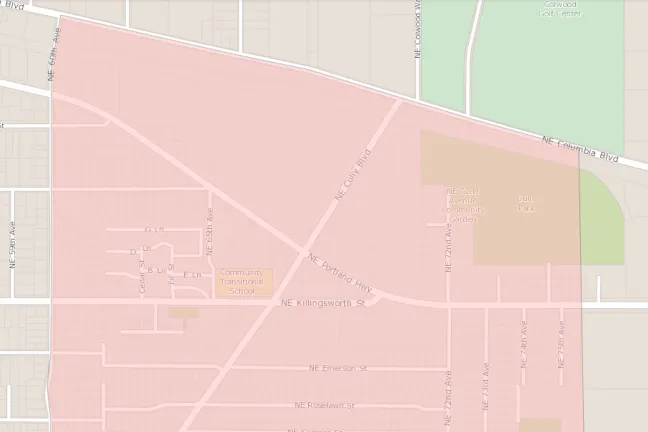Authorities Monday night expanded the evacuation area nearest to a five-alarm fire at a northeast Portland auto salvage yard after air quality monitors picked up unhealthy levels of fine particulate. The City of Portland and Multnomah County officials ordered residents living in an area bordered from NE 60th to NE 76th and NE Columbia and NE Alberta to immediately leave the area.
For people west of the evacuation area between 42nd and 60th, Alberta and Columbia, unhealthy air is causing a significant risk to vulnerable people including young children, seniors and people with compromised respiratory systems. Residents should voluntarily relocate to a shelter or stay with family/friends outside of the area.
People needing shelter assistance can call 2-1-1. If you need transportation, 503-823-2323.
Environmental Protection Agency monitors erected Monday afternoon showed plume of smoke from the burning metal and tires at the wrecking yard, located at 75th Ave and Killingsworth St., settled into neighborhoods along Killingsworth. East winds were expected to drive the smoke closer to the ground until morning.
Portland Fire and Rescue responded to the blaze about 10 a.m. Monday. An emergency shelter, operated in partnership by Multnomah County and the Red Cross, will open at 1415 SE 122nd Ave., in Portland. Pets are welcome.
Health Impacts
Gases and fine particles in smoke can irritate people’s eyes and respiratory system, and worsen chronic heart and lung diseases, according to Todd Hudson, a public health toxicologist with the Oregon Health Authority.
But the black smoke from sources such as auto salvage yards or tires can have more of that fine particulate and toxic chemicals, including asbestos, aldehydes, acid gases, sulfur dioxide, nitrogen oxides, polycyclic aromatic hydrocarbons, benzene, toluene, styrene, metals and dioxins.
Smoke from burning tires or plastic material can include toxic chemicals of synthetic rubber compounds. Each tire contains about two gallons of petroleum products similar to heating oil.
Children, the elderly and people with heart and lung problems are at at greatest risk.
Young children and infants breathe more times per minute than adults and take in more air volume relative to their body size, making them among the sensitive groups when air quality is poor.
People over age 65 and those with known heart and lung problems like asthma and emphysema are more sensitive to lung irritation from breathing in small particles. They may have cough, wheezing, trouble breathing, chest tightness, lightheadedness or unusual tiredness. It is especially important that anyone with these conditions stay inside and have their usual medications on hand.
Anyone with symptoms that are severe or don’t get better should contact their healthcare provider right away.

